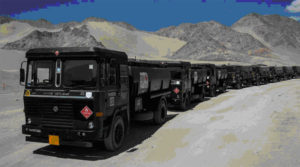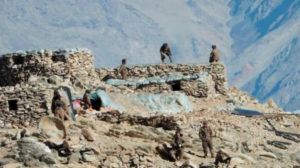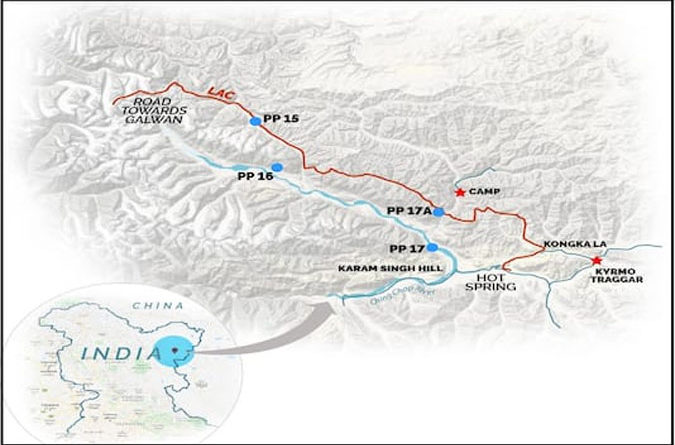Hot Springs And Gogra Posts – Strategic Significance
18 April 2021
During the 11th round of discussions between the senior military commanders of India and China on April 9, to resolve the over 11-month long standoff in eastern Ladakh, a top source who had been involved in decision-making told The Indian Express that China had refused to vacate two of the four original friction points.
China, according to the source, informed India that it should be “happy” with what has been achieved regarding the disengagement in the Pangong Tso area. At two friction points, Patrolling Point 15 (PP15) in Hot Springs, and PP17A near Gogra Post, China still has a platoon-level strength each, along with vehicles.
What Had Happened Here Last Year?
In May 2020 when China had diverted its troops who had come to the Tibetan plateau region for their annual exercise, towards the Line of Actual Control (LAC) in eastern Ladakh, creating a standoff with India, PP15 and PP17A were two of the four points where the soldiers were eyeball-to-eyeball.
The other points of friction at that time were PP14 in Galwan Valley and the north bank of Pangong Tso. Chinese troops had crossed the LAC at all these points and positioned themselves across.

India china border standoff, Indian army, LAC dispute, IAF chief on border situation, india china lac situation, india china border dispute, iaf day, air force, rks bhadauria, indian express newsHot Springs and Gogra Post are close to the boundary between two of the most historically disturbed provinces of China.
The maximum ingress was on the north bank of Pangong Tso, where the Chinese troops were at Finger 4, which is 8 km west of Finger 8 where India says the LAC lies.
PP15 And 17A
Along the Line of Actual Control (LAC) between India in China, Indian Army has been given certain locations that its troops have to access to patrol the area under its control. These points are known as patrolling points, or PPs, and are decided by the China Study Group (CSG).
CSG was set-up in 1976, when Indira Gandhi was the prime minister, and is the apex decision-making body on China.
Barring certain areas, like Depsang Plains, these patrolling points are on the LAC, and troops access these points to assert their control over the territory. It is an important exercise since the boundary between India and China is not yet officially demarcated.
PP15 and PP17A are two of the 65 patrolling points in Ladakh along the LAC. (Some of these 65 also have an additional Alpha PPs, which are further ahead from the original PPs. So PP17A is different from, but close to, PP17.)
PP15 is located in an area known as the Hot Springs, while PP17A is near an area called the Gogra post.
Where Are These Two Areas?
Both of these are close to the Chang Chenmo river in the Galwan sub-sector of the LAC in eastern Ladakh. While Hot Springs is just north of the Chang Chenmo river, Gogra Post is east of the point where the river takes a hairpin bend coming southeast from Galwan Valley and turning southwest.
The area is north of the Karakoram Range of mountains, which lies north of the Pangong Tso lake, and south east of Galwan Valley, which became a major flashpoint and a violent faceoff in June 2020 had left 20 Indian and at least four Chinese troops dead.
The Importance Of This Region
The area lies close to Kongka Pass, one of the main passes, which, according to China marks the boundary between India and China. India’s claim of the international boundary lies significantly east, as it includes the entire Aksai Chin area as well.
During the official negotiations on the boundary between India and China in 1960, Yang Kung-su, who was the Tibet Bureau of Foreign Affairs in the Chinese Foreign Office, had stated that the Western Sector of the boundary “is divided into two portions, with Kongka Pass as the dividing point” and the portion “north of Kongka Pass is the boundary between Sinkiang (now Xinjiang) and Ladakh, and the portion south of it is that between Tibet and Ladakh”.
Thus, Hot Springs and Gogra Post are close to the boundary between two of the most historically disturbed provinces of China.
Significant For The Military
Both PP15 and PP17A are in an area where India and China largely agree on the alignment of the LAC, which comes southeast from Galwan Valley, turns down at Konga La and moves towards Ann Pass before reaching the north bank of Pangong Tso.
China has a major post of the People’s Liberation Army a few km east of Kongka La, while Indian posts lie southwest of it.
However, according to the official history of the 1962 war between India and China, the region is not identified as a major “launchpad” from where an offensive can be launched by either side.

India China Galwan valley clash, Galwan valley China death, Galwan valley India China death toll, india china Ladakh, india china newsChinese troops dismantling their bunkers at Pangong Tso region, in Ladakh along the India-China border. (Photo: Indian Army/AP)
The official history notes that the Chinese had “succeeded in eliminating possible launch pads for any offensive against the Aksai Chin highway by eliminating DBO, Chushul and Demchok positions. It said that it “all the more strengthens the contention that Indians should have attempted to retain at least one jump off point: Chushul”.
But the history notes that Hot Springs was an important post even during the 1962 conflict. In October 1962 there was a company strength at the Galwan Post, while three other posts—Hot springs, Nala Junction and Patrol Base—had strengths of a platoon. Hot Spring also served as the Company headquarter, and was shelled by the Chinese on October 21. Chinese troops had wanted to get behind Hot Spring, but were resisted at the Nala Junction.
The Situation Now
As two of the four initial friction points during the recent standoff, disengagement of troops from PP15 and PP17A had started in June 2020, during the initial rounds of discussion.
Both sides had agreed to disengage from PP14 (Galwan Valley), PP15 and PP17A after the third round of meeting of the senior military commanders in June, following the Galwan Valley clashes. However, though China pulled back its troops from PP14, it did not complete the disengagement from PP15 and PP17A.
While earlier there had been a company-sized strength at both these locations, there is still a platoon each there, along with military vehicles.
After the disengagement in the Pangong Tso region, when both India and China had pulled back its troops and armoured columns in February, as per the agreement the senior military commanders were to meet to discuss the other friction points, including these two and Depsang Plains.
However, no fresh ground could be broken in the talks, and China has refused to pullback.
Courtesy: IE

